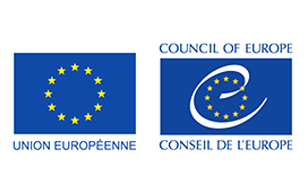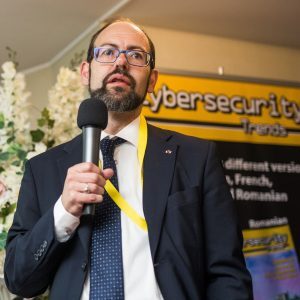
Aims of the Meetings / Buts de la rencontre
INTRODUCTION
Laurent Chrzanovski
- In which countries NIS has generated weak CERTs + bureaucratic hell and in which it has increased national security and resilience. Selected examples.
- Examples of democracies that multiply (thanks to the national formula chosen for the implementation of NIS) cyber administrative fines (which can be cumulated for the same accident) that cannot be contested and therefore are not compensated by an insurance company… while even a drunk driver caught at 200 km/h on a motorway can make a legal recourse…
EXCHANGE ROUND-TABLE
Every participant shares her/his own experiences/views.
DEBATE (IDEA OF STRUCTURE):
- How REGIONAL OR TERRITORIAL CERTs can be created in ultra-centralised states?
(comparison between Switzerland and France) - How can REGIONAL CERTs be designed without breaking the monopoly of the NATIONAL CERT outside federal countries / those with autonomous regions?
- How are SECTORIAL CERTs (external collaboration, performance, usefulness, etc.)? In which countries are them consistent in quantity and quality ?
- Why the majority of CSIRTs (SECTORIAL OR TERRITORIAL CERTs) do not want to register, or at least to be “listed”, and then, if necessary, to apply for accreditation to finally become accredited, neither in the ENISA CSIRT network, nor in the FIRST CSIRT network?*
- Shouldn’t territorial CERTs/C3Ts be based on the multiplicity of SECTOR CERTs (in countries where the latter are powerful), which offer the best indicators to know the needs of a territory/region according to its economic characteristics?
- Nis 2.0: will it cause damages and generate even more compliance or will it prove to be useful?
*(see https://www.enisa.europa.eu/topics/csirts-in-europe/csirt-inventory/certs-by-country-interactive-map)
CONCLUDING SPEECH
Gaetano SANACORE, on the basis of the text proposed by the European Parliament (NIS 2).
INTRODUCTION
Laurent Chrzanovski
- Dans quels pays le NIS a généré des CERT faibles + un enfer bureaucratique et dans lesquels il a augmenté la sécurité et la résilience nationale. Exemples choisis.
- Exemples de démocraties qui multiplient (grâce à la formule nationale choisie pour la mise en œuvre du NIS) cyber-amendes administratives (qui peuvent se cumuler pour un même accident) qui ne peuvent être contestées et qui, par conséquent, ne sont pas indemnisées par les assurances… alors que même un conducteur ivre surpris à 200 km/h sur une autoroute peut intenter une action en justice…
ÉCHANGES (TABLE RONDE)
Chacun fait partie de ses propres expériences/points de vue.
DÉBAT (IDÉES DE STRUCTURE) :
- Comment peut-on, dans les ÉTATS ULTRA-CENTRALISES, créer des STRUCTURES REGIONALES OU TERRITORIALES FONCTIONNELLES? (comparaison entre la Suisse et la France)
- Comment concevoir des CERTs REGIONAUX sans briser le monopole du CERT NATIONAL en dehors des pays fédéraux / ceux qui possèdent des régions autonomes ?
- Comment sont les CERTs SECTORIELS (collaboration extérieure, performance, utilité, etc.) ? Dans quels pays constituent-ils un tissu consistant ?
- Pourquoi la majorité des CSIRT (CERT SECTORIELS OU TERRITORIAUX) ne veulent-ils pas s’enregistrer, au moins pour être “listés”, puis, le cas échéant, demander à être accrédités puis le devenir, ni au réseau CSIRT de l’ENISA, ni à celui du FIRST ?*
- Les CERTs/C3T TERRITORIAUX ne devraient-ils pas être basés sur la multiplicité des CERT SECTORIELS (dans les pays où ces derniers sont puissants), qui offrent les meilleurs indicateurs pour connaître les besoins d’un territoire/région en fonction de ses caractéristiques économiques?
- NIS 2.0 : va-t-il faire des dégâts et générer encore plus de compliance ou au contraire saura-t-il se révéler utile ?
(cf. https://www.enisa.europa.eu/topics/csirts-in-europe/csirt-inventory/certs-by-country-interactive-map)
DISCOURS DE CONCLUSION
Gaetano SANACORE, sur la base du texte proposé par le Parlement Européen (NIS 2).
Ressources utiles / Useful documentation

ENISA’S NIS WEBPAGE:
https://www.enisa.europa.eu/

NIS1 Legal Base: Directive (EU) 2016/1148 of the European Parliament and of the Council of 6 July 2016 concerning measures for a high common level of security of network and information systems across the Union :
https://eur-lex.europa.eu/

https://www.
Program
09:30 - 13:30
Welcome / Mot de bienvenue
Stéphane MORTIER, Laurent CHRZANOVSKI
Debate / Débat
Delphine BERNET-TRAVERT
David BLANPAIN
Laurent CHRZANOVSKI
Olivier FEIX
Cpt. Patrick GHION
Stéphane MORTIER
Gaetano SANACORE
Valéry VANDER GEETEN
Conclusions
Gaetano SANACORE
13:30-14:30: LUNCHEON
Organizer and Host

Partners and supporters

Speakers
Location / Emplacement












